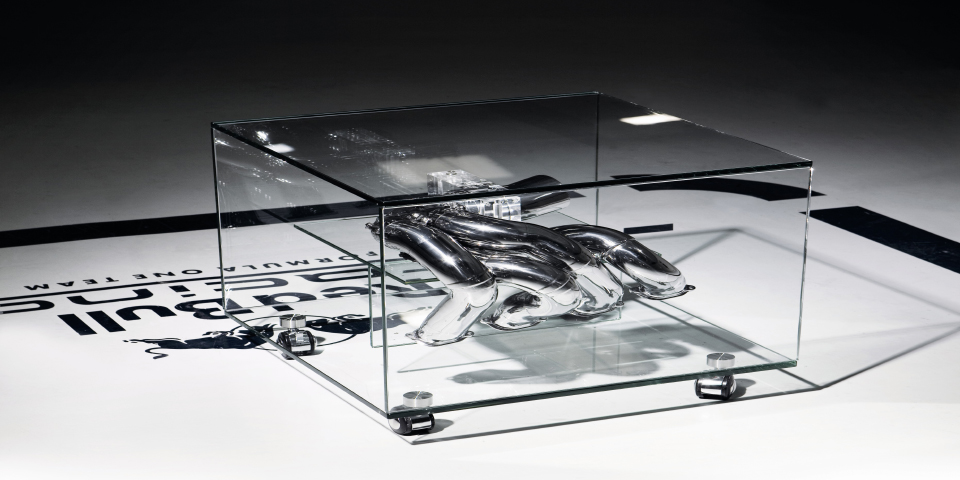Chasing Tail-Risk with Gold – Ding Dong!
By Adrian Ash
The “tail risk” of a currency crisis worldwide surely deserves close attention…
AH, THE LOVELY Peta Todd…
“[I am] delighted that gold has been found in the Chilean mine where 33 workers are trapped,” the topless Page 3 model told readers of The Sun on Wednesday morning.
The former trainee hairdresser (30F-24-34) from Essex knows a thing or two about natural resources. Well, maybe not that natural…but like she told News in Briefs in The Sun, “The timing couldn’t be better.
“Yesterday I noticed gold futures reached a record $1,340 an ounce after recent market volatility boosted demand for the metal.”
Okay, so Peta’s breathless analysis – courtesy of some under-sexed sub-editor in Wapping, East London – is a little awry. (Market volatility in gold actually stands at a 5-year low.) But it’s little wonder gold only pushed higher again on her hot market commentary, breaking to new all-time highs above $1350 an ounce just after she shared her insights with The Sun‘s 7.6 million readers.
Gold, after all, is the antidote to official currency – the one monetary asset no one can create or destroy at will. Whereas in that snake-pit known as the FX market, Israel just joined the central banks of Argentina, Australia, Brazil, Chile, Colombia, Indonesia, Japan, Peru, the Philippines, Poland, South Korea, Switzerland, Romania and Ukraine in selling its own currency, and actively trying to depress its value, to preserve market share for its national export corporations.
Beijing, as ever, is being more subtle (or blatant, depending on the color of your rosette), allowing the Yuan to rise faster against the US Dollar than at any time in four years, but also buying Japanese and Euro-denominated bonds with its huge stockpile of Dollars, and thus “intervening” to undo other people’s intervention.
Confused? You will be…shortly before you go broke if things carry on like this for much longer. Everyone’s out to weaken their own money. Most especially against the fast-weakening Dollar. Yet Ben Bernanke hasn’t even begun money-printing part II…and gold rarely looked a plainer “no brainer”. Which should give both owners and would-be buyers cause for pause today.
Gold’s current bull market began with a handful of people buying what central banks sold at the bottom of a two-decade slump. So what more climatic sell signal could a contrarian ask for than a topless model in the UK’s best-selling rag? In late 1999, the New York Times asked “Who needs gold when you’ve got Alan Greenspan?” – just ahead of the DotCom Crash. The answer now looks so obvious (“Everyone!”) it might seem time to get bloody-minded again. Maybe now you should sell short everything you can beg, borrow or steal in gold. Because what bigger crowd could you want than super-soft-porn lovers ogling Essex girls in the tabloids?
“Just because gold is a safe haven, that doesn’t make it a cheap safe haven,” as Graham Birch, long-time gold bull and former manager of the $5 billion Blackrock natural resources fund, said at last week’s LBMA conference in Berlin.
Put another way, “If you are a high-net-worth investor, a sovereign wealth fund, or a central bank, it makes perfect sense to hold a modest proportion of your portfolio in gold as a hedge against extreme events,” reckons Kenneth Rogoff, professor of economics and public policy at Harvard, and formerly the IMF’s chief economist.
“But, despite gold’s heightened allure in the wake of an extraordinary run-up in its price, it remains a very risky bet for most of us.”
Risk is a relative beast, of course. And as a new research paper from gold-market development group the World Gold Council shows, the risks that gold investment can help defend against deserve weighing against those it might bring. But with gold now beating stock markets hands down for 10 years running, however, the longevity (if not rate-of-gain) in gold continues to raise doubts for new observers, just as it has done since early 2008.
Thing is, these cautious savers remain – like our Peta – just that: observers. Meaning that the real crisis, pulling in the real weight of money from inflation-wracked savers worldwide who previously felt safe enough to sit gold’s bull market out, has yet to arrive…if ever it does. Nothing is certain, of course, but that “tail risk” – of today’s central-bank action tipping into a genuine currency crisis worldwide – looks more than worth your attention, if only because of the disaster it would bring to even the most modest of modest cash savers. A collapse in monetary values the world over would seem the very definition of “infrequent or unlikely but consequential negative events”, which is how the World Gold Council’s latest research defines “tail risk” – meaning that kind of event sitting so far out on the distribution curve of investment returns, even the best academics don’t feel the need to fret that they might happen.
Noting “legions of new consumers” in the resource-hungry emerging markets, for instance, Harvard’s Ken Rogoff also sees Asian central banks buying gold…plus zero interest rates in the West…and “new financial instruments that make it easier to trade and speculate in gold”. Set against this clear case for gold, however, Rogoff still feels that buying gold “remains risky” for private investors, despite delivering 15% annual gains for Dollar, Euro and Sterling investors on average since 2001.
Indeed, says Rogoff, it’s “dangerous to extrapolate from [gold’s] short-term trends”. Which begs the question – first – of what could ever be cheap about a lump of metal that pays you nothing in interest? Second, just how short-term is gold’s rising trend?
Let’s put Peta’s “incredible curves” (copyright Rupert Murdoch) aside for a moment. Rogoff says gold has risen by 300% in a decade, but that’s no longer true for Dollar investors. Trading at $1350 in London on Wednesday morning, gold has now gained 300% in the last seven-and-half years, making it about as racy as, say, residential real estate in Northern Ireland (up 340% in the decade to Sept. 2008), but less frenzied than Tokyo’s Nikkei bubble (300% in the five years to Dec. 1989), or crude oil’s pre-crisis top (300% in 42 months by mid-2008), or the Nasdaq tech mania (300% inside 41 months ending Feb. 2000).
Yes, the gold top of Jan. 1980 was clearly a bubble in hindsight (and silver got it with bells on thanks to Texas oil-barons the Hunt brothers trying to corner the market). But quadrupling in eight years is a long way from doubling in six months – and the circumstances of late 1979 are a foreign country right now, even if the Fed’s looming QEII does threaten (or aim?) to take us back to double-digit inflation.
The Iranian hostage crisis, the Soviet invasion of Afghanistan, plus rumors that the US Treasury had not only suspended but considered reversing its late ’70s gold sales…these events made a “perfect storm” for gold which not even the collapse of the Dollar followed by the collapse of Lehman Brothers could match between 2007 and 2009. Instead, gold soared, fell, and then recovered as the financial world fell apart, offering shelter against the storms crashing into currencies, credit and equity risk-capital.
Holding 8.5% of a $10 million portfolio in gold, for instance, would have reduced losses incurred during the height of the financial crisis (Sept. 2007 to March 2009) by some $470,000 according to the World Gold Council’s new research. No, few of us have that kind of money to worry about. Yes, management and transaction fees in most “retail” products would make creating a well-diversified portfolio in miniature too costly, as well. But the fact remains that bad news tends to be good for gold, however much you own. Just ask a Mexican, Russian, Korean or Thai cash-saver who didn’t also own gold how things panned out for them in the late 1990s. Against equities too, gold tends to rise when stock-markets fall, if not slump.
“Whenever the S&P has lost 10% or more, gold has always been up,” according to Shayne McGuire, head of the Texas Teachers’ Retirement fund, speaking at last month’s LBMA conference in Berlin.
So sure – The Sun‘s Peta might be ringing a bell at the top (“Ding dong!” as Lesley Phillips would say.) But you can’t guess whether or not insurance is cheap unless (and until) the insured disaster strikes…and you then count the cost of not being covered.
Adrian Ash
Gold price chart, no delay | Buy gold online at live prices
Formerly City correspondent for The Daily Reckoning in London and head of editorial at the UK’s leading financial advisory for private investors, Adrian Ash is the editor of Gold News and head of research at BullionVault – winner of the Queen’s Award for Enterprise Innovation, 2009 and now backed by the mining-sector’s World Gold Council research body – where you can buy gold today vaulted in Zurich on $3 spreads and 0.8% dealing fees.
(c) BullionVault 2010
Please Note: This article is to inform your thinking, not lead it. Only you can decide the best place for your money, and any decision you make will put your money at risk. Information or data included here may have already been overtaken by events – and must be verified elsewhere – should you choose to act on it.













